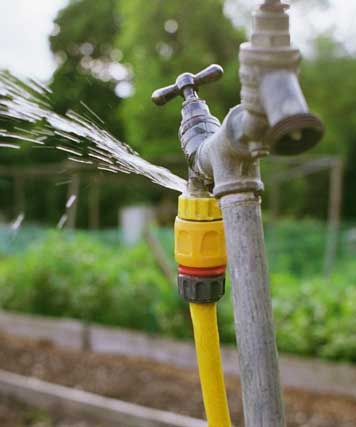Just how to Examine If Your Residence Has a Concealed Leakage
Just how to Examine If Your Residence Has a Concealed Leakage
Blog Article
They are making a few great points about Leaking water lines in general in this great article on the next paragraphs.

Early detection of leaking water lines can minimize a prospective catastrophe. Aside from conserving you money, it will reduce the irritation and also aggravation. The moment you find a leakage, calling your plumber for repair services is the most effective service. Some tiny water leakages might not be visible. If you can not detect it with your nude eyes, right here are some hacks that help.
1. Take A Look At the Water Meter
Every house has a water meter. Checking it is a guaranteed manner in which aids you find leakages. For beginners, turn off all the water sources. Make sure no one will flush, utilize the tap, shower, run the cleaning equipment or dish washer. From there, go to the meter as well as watch if it will certainly change. Considering that no one is utilizing it, there must be no motions. That suggests a fast-moving leakage if it moves. If you find no adjustments, wait a hr or 2 and examine back again. This indicates you might have a sluggish leakage that could also be underground.
2. Inspect Water Usage
Analyze your water bills as well as track your water consumption. As the one paying it, you should notice if there are any kind of disparities. If you find sudden changes, despite your intake coinciding, it indicates that you have leaks in your plumbing system. Bear in mind, your water expense ought to drop under the exact same range every month. An abrupt spike in your bill indicates a fast-moving leakage.
Meanwhile, a consistent increase each month, even with the very same practices, reveals you have a sluggish leakage that's additionally slowly rising. Call a plumber to thoroughly inspect your residential property, especially if you feel a cozy location on your floor with piping beneath.
3. Do a Food Coloring Examination
30% comes from toilets when it comes to water consumption. Examination to see if they are running effectively. Drop specks of food color in the container and wait 10 minutes. If the color in some way infiltrates your dish throughout that time without flushing, there's a leak between the storage tank as well as dish.
4. Asses Exterior Lines
Do not neglect to check your outdoor water lines also. Needs to water permeate out of the link, you have a loosened rubber gasket. One small leakage can lose tons of water as well as increase your water bill.
5. Analyze the scenario and also evaluate
Home owners need to make it a behavior to examine under the sink counters and also even inside closets for any bad odor or mold development. These two warnings show a leakage so timely focus is needed. Doing routine assessments, even bi-annually, can save you from a major issue.
Check for stainings and also compromising as most pipelines as well as devices have a life expectations. If you think leaking water lines in your plumbing system, do not wait for it to escalate.
Early discovery of leaking water lines can minimize a prospective disaster. Some small water leaks might not be noticeable. Inspecting it is a surefire way that aids you discover leakages. One little leak can lose lots of water and also surge your water costs.
If you think dripping water lines in your plumbing system, don't wait for it to rise.
Tips for Detecting Hidden Plumbing Leaks
Check for Signs of Water Damage
We recommend that you check the following places for evidence of water damage:
Near where you store your water heater
Around your sump pump
In areas where pipes are visible
Underneath cabinetry or a vanity beneath a sink
Where your outside hose bib isIf water damage is present, you may also notice mold and/or mildew or smell a foul or musky odor. You might also be able to hear the sound of water running where it shouldn’t be.
Perform a Water Meter Test
One of the easiest ways to determine whether you have a hidden leak on your property is to test your water meter. Turn off all appliances in that use water and make sure you don’t have any faucets running. Locate your water meter and record the reading on it. Continue to leave everything off for a minimum of two hours and then go back and see the meter reading. If it’s a noticeable difference, chances are you have a hidden plumbing leak.
Monitor Your Outside Usage
As the seasons change, you might use more water to keep your yard lush and green and your flowers blooming. However, it’s important to routinely ensure that your sprinkler or irrigation system is working properly and that any outside faucets are completely off. This way you’re not wasting any water.
Do the Toilet Food Coloring Test
Are you kept up at night because your toilet continues to run? If you’ve noticed your toilet randomly refills, especially when it’s not in use, it could mean you have a defective flapper tank and water will leak into the bowl. Fortunately, there’s an easy (and kind of fun!) way to test whether you’re dealing with this issue. Grab some food coloring and add a few drops into your toilet’s tank. Wait 15 minutes and then check to see whether the water in the bowl is colored. If it is, you have a leak within your toilet and the internal assembly will need to be repaired or replaced.
https://www.carterservices.com/blog/2020/february/tips-for-detecting-hidden-plumbing-leaks/

We had been guided to that editorial about Detecting hidden plumbing leaks from an acquaintance on our other web page. Are you aware of another person who is excited about the topic? Take a moment to share it. Many thanks for your time. Come back soon.
Report this page